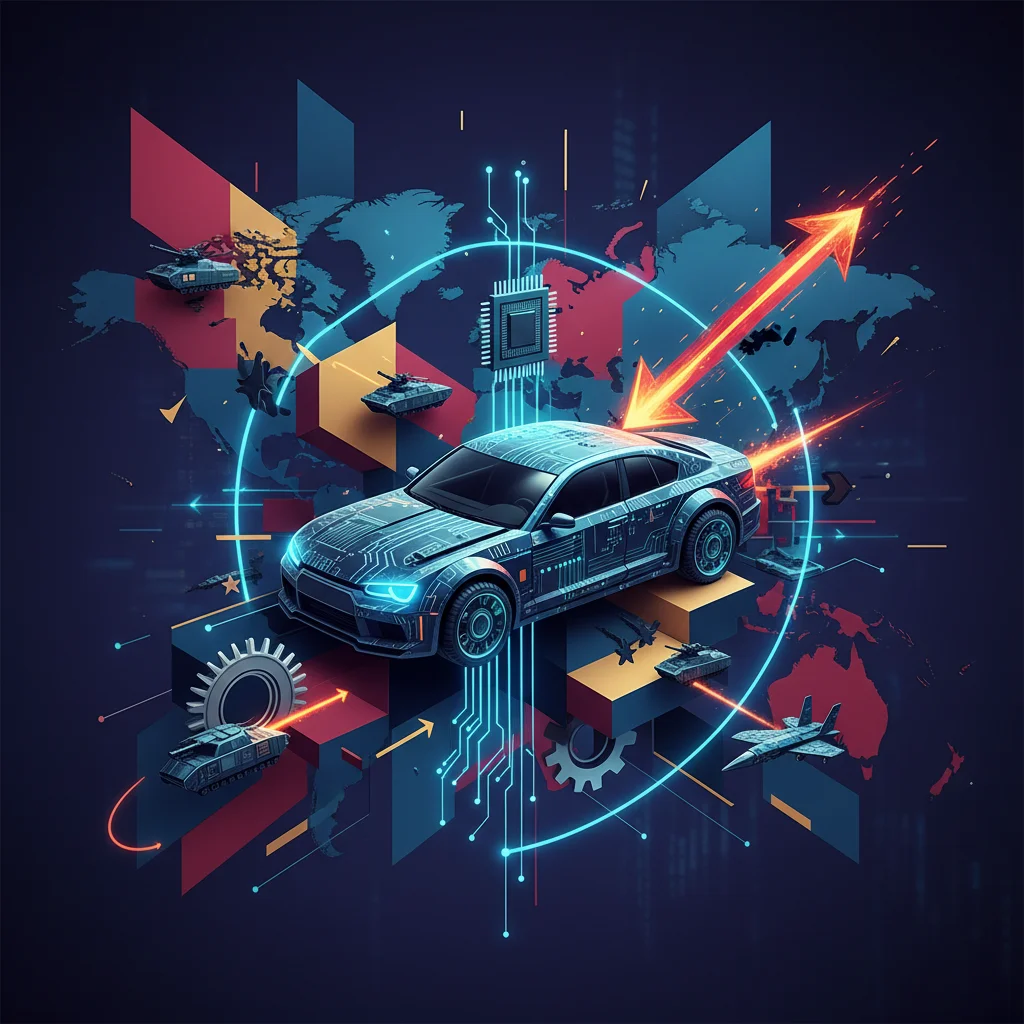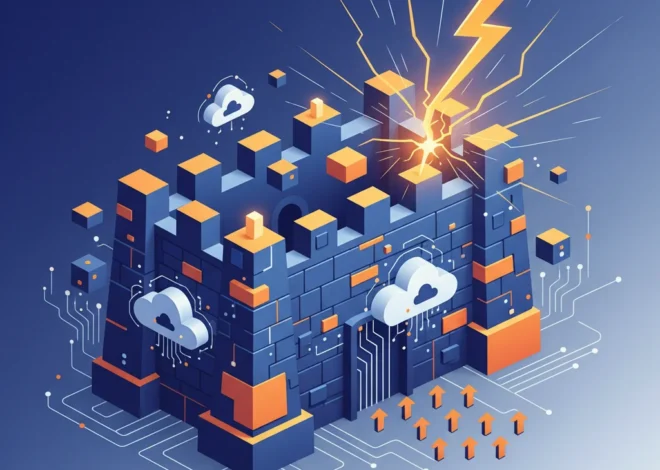
The Chip War Just Shifted Gears: Why Your Next Car is on the Geopolitical Frontline
Take a moment to think about your car. Or the car you dream of buying. It’s no longer just a mechanical marvel of engine and steel; it’s a sophisticated, rolling data center. It’s packed with intelligent software, powered by artificial intelligence, and connected to the cloud. From the adaptive cruise control that uses machine learning to predict traffic flow, to the infotainment system running dozens of apps, the modern vehicle is a testament to technological innovation. But what if the tiny, unsung heroes that make all this possible—the semiconductor chips—suddenly became pawns in a high-stakes global chess match?
That’s not a hypothetical scenario anymore. A new front has just opened in the global tech war, and it runs right through the automotive assembly line. According to a recent report from the Financial Times, Beijing is retaliating against Western tech sanctions by restricting exports from a key chip supplier, Nexperia. This move threatens to send shockwaves through the European car industry, and it’s a stark reminder that the code we write and the systems we build rest on a fragile foundation of global supply chains.
For anyone in the tech world—from software developers and entrepreneurs to leaders at established firms—this isn’t just a “car problem.” It’s a canary in the coal mine for the entire tech ecosystem.
The Shot Fired: Understanding China’s Retaliation
So, what exactly happened? The conflict centers on a company called Nexperia. While it’s headquartered in the Netherlands, it is a subsidiary of the Chinese tech company Wingtech. Nexperia is a powerhouse in producing essential, though not cutting-edge, semiconductors. These aren’t the glamorous, high-performance GPUs used for training massive AI models; they are the workhorse chips that manage power, run sensors, and control everything from your electric windows to your anti-lock brakes.
This move by Beijing didn’t come out of nowhere. It’s a direct, tit-for-tat response. The Dutch government, aligning with the U.S., recently revoked an export license for ASML, a Dutch company that holds a virtual monopoly on the extreme ultraviolet (EUV) lithography machines needed to produce the world’s most advanced chips. By restricting ASML, the West aimed to slow China’s progress in high-end computing and military AI. Now, China is firing back by squeezing the supply of the more basic, but equally vital, chips that Western industries depend on.
The European auto industry is now bracing for significant disruption. As one industry body warned, this could seriously impact vehicle production across the continent (source). After the supply chain chaos of the pandemic, this is the last thing carmakers needed.
Order in the Code: How AI is Rewriting the Rules of the Legal World
Why “Dumb” Chips are Critical for “Smart” Cars
It’s easy to get fixated on the race for the most powerful AI accelerators. But the reality of the automotive world—and indeed, most of the tech landscape—is that it runs on a massive volume of so-called “mature-node” or “legacy” chips. A single modern car can contain over 1,000 of these semiconductors.
Think of it like building a skyscraper. You need brilliant architects and advanced engineering for the design (the high-end AI chips), but you also need millions of standard-sized bricks, bolts, and wires (the mature-node chips) to build the structure. Without a steady supply of these foundational components, the entire project grinds to a halt.
This is especially true for the rise of the Software-Defined Vehicle (SDV). The grand vision of cars that improve over time with over-the-air updates, offer new features via a SaaS model, and achieve higher levels of driving automation is entirely dependent on a complex web of hardware. The sophisticated machine learning algorithms for an Advanced Driver-Assistance System (ADAS) can’t function without the dozens of power management and sensor controller chips that feed them data and execute their commands. This hardware-level disruption directly threatens the progress of automotive software and AI development.
To better understand the escalating nature of this conflict, let’s look at the key actions and reactions:
| Action by the West (U.S. & Netherlands) | Stated Rationale | Reaction by China | Implied Rationale |
|---|---|---|---|
| Restricting ASML from selling advanced EUV lithography machines to China. | National security; preventing the use of advanced chips in military technology and surveillance. | Curbing exports from Chinese-owned Nexperia, a key supplier of automotive chips. | Retaliation; demonstrating China’s control over other critical parts of the supply chain. |
| Pressuring allies to adopt similar export controls on high-end semiconductor technology. | Creating a unified front to slow China’s technological advancement in strategic areas like AI. | Restricting exports of critical minerals like gallium and germanium, essential for chipmaking. | Targeting choke points in the raw material supply chain to inflict economic pain and gain leverage. |
For startups and tech companies, the takeaway is clear: supply chain resilience is no longer a boring operational detail—it’s a core strategic function. Your bill of materials is now a geopolitical risk map. This will spur a new wave of innovation, not just in domestic manufacturing, but in software. Expect to see a surge in SaaS platforms for supply chain visibility, AI-powered risk modeling, and advanced automation to diversify sourcing. Furthermore, the future of cybersecurity is inextricably linked to this; a compromised hardware component from an untrusted source can render the most secure code useless. The new C-suite may soon need a Chief Geopolitical Risk Officer.
The Ripple Effect: From the Factory Floor to the Cloud
The immediate impact of this chip squeeze is on car production schedules. But the second- and third-order effects will ripple through the entire tech ecosystem, creating both challenges and opportunities.
1. A Forcing Function for Software Innovation
When hardware becomes unpredictable, software has to become more flexible. Carmakers and their suppliers can no longer design software for a specific, guaranteed-for-life chipset. This will accelerate the move towards hardware abstraction layers and more modular software architectures. Developers will be tasked with writing code that is more portable and less dependent on the underlying silicon. This is a massive challenge in programming for real-time systems like a car, but a necessary one. It’s a paradigm shift that will reward companies that invest in robust, adaptable software platforms.
2. The Acceleration of Supply Chain Automation
The days of relying on a “just-in-time” inventory system with a single-source supplier are over. Companies are now desperately seeking visibility and control over their multi-tiered supply chains. This creates a huge opportunity for startups building SaaS and AI-powered platforms for supply chain management. Think digital twins of the entire supply network, machine learning models that predict disruptions based on geopolitical news, and automated systems for vetting and onboarding new suppliers. The demand for this kind of tech just went into overdrive.
Intel's Audacious Comeback: Inside the Arizona Fab That Could Redefine Tech's Future
3. Heightened Cybersecurity Stakes
As carmakers scramble to find new chip suppliers, they may be forced to work with less-established or less-vetted partners. Each new component introduced into a vehicle is a potential attack vector. A malicious chip could create backdoors, compromise vehicle safety systems, or exfiltrate data. This elevates the importance of robust hardware-level cybersecurity measures and a “zero trust” approach that extends all the way down to the silicon. The industry’s reliance on a globalized parts network is now its greatest security challenge.
Navigating the New Geopolitical Reality
This conflict over automotive chips is a microcosm of a much larger global realignment. The tech world is bifurcating into distinct spheres of influence, and the bridges between them are becoming increasingly fragile. This “decoupling” or “de-risking” will define the landscape for the next decade.
This new era demands a new mindset. For entrepreneurs and startups, it means building business models that account for geopolitical volatility. For developers and engineers, it means designing systems that are resilient and adaptable by default. For investors, it means looking beyond pure technological merit and assessing the geopolitical durability of a company’s operations.
The battle for semiconductor supremacy is no longer a quiet contest fought in fabrication plants and research labs. It has spilled out into the open, impacting the products we use every day. The car in your driveway is now a symbol of this new reality—a marvel of global innovation caught in the crossfire of a tech cold war. The road ahead will be bumpy, but for those who can navigate it, the opportunities to build the resilient, secure, and intelligent systems of the future have never been greater.


